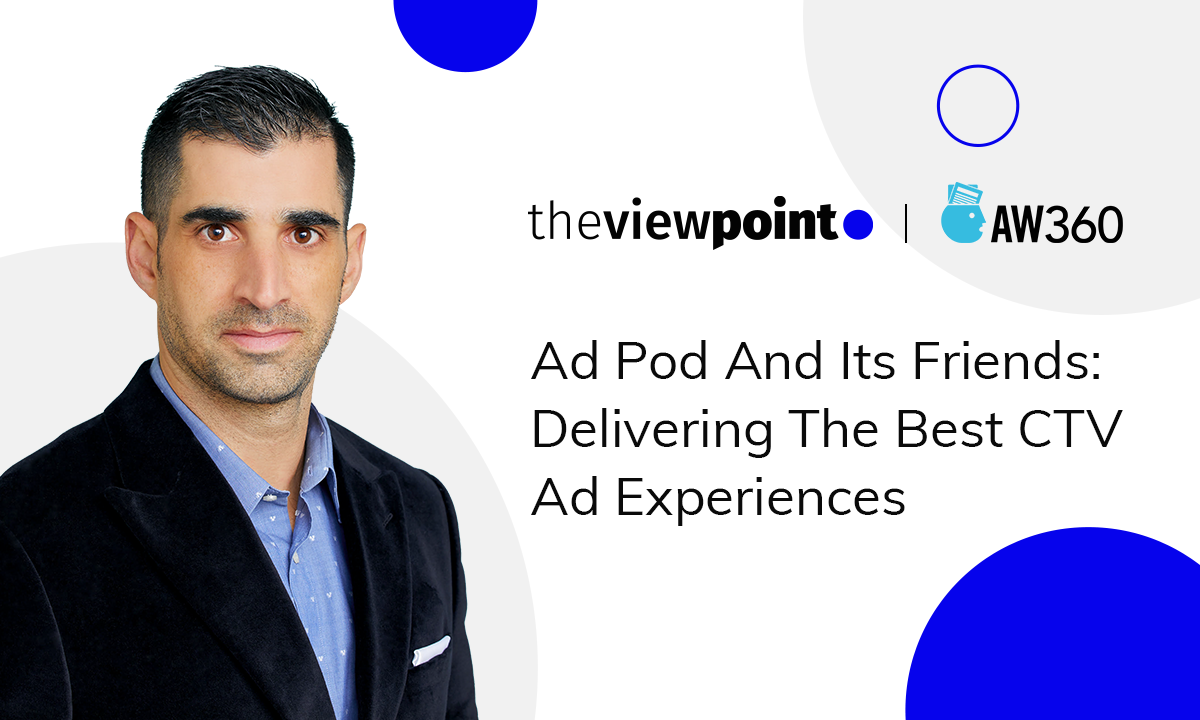
The Role of First-party and Second-party Data in CTV Targeting
The CTV (connected TV) industry is growing rapidly. And for many marketers out there, that growth represents one of the biggest ad-buying opportunities for the foreseeable future. The stats don’t lie. Over 80% of US households had at least one CTV device as of the second quarter of 2021, according to Leichtman Research Group. While CTV’s share of total video impressions in the US has reached over 40% in the previous year, nearly tying with the leader – mobile, as stated by Innovid.
The rise of the connected television industry owes much to pandemic lockdowns, but nonetheless, the changes in content consumption will likely stay for much longer. And if there are more engaged people, then there are obvious marketing benefits for advertisers to collect. Ad buyers can plainly see the benefits as the possibilities unlocked by incremental reach, unique audiences, precise performance measurements, and ever-increasing viewer rates turn into magnets for their ad dollars.
Data Collection Approaches in CTV Targeting
Collecting data is arguably the most complicated part of targeting, and one that requires a sophisticated technical approach. There are two main data collection strategies. These are commonly known as the Probabilistic approach and the Deterministic approach.
Probabilistic data collection approach. This method collects analytics based on thousands of unique data points to statistically determine correlations in web or app usage. It traces basic anonymous data identifiers like type of device, page visits, time of visit, type of operating system, and so forth. The probabilistic method is beneficial with its scalability and reach, though it lacks accuracy compared to other methods.
Deterministic data collection approach. This focuses on gathering information that is tied to the user’s personal identifiers. This includes phone numbers and email addresses that match data with available records (such as current location) to define individuals for better targeting across multiple screens.
This data is collected using registration forms, or through encouraging users to voluntarily share that data in exchange for a discount or some other reward. Such information is then tied to an identifier that can be shared between advertisers for mutual benefit. Big streaming apps in the CTV environment usually use RIDA, TIFA, AFAI, or VIDA user identifiers. This allows advertisers, DSPs, and other parties of ad exchange to effectively handle targeting in their streaming environments, something they cannot achieve on desktop or mobile.
First-party Data vs Second-party Data vs Third-party Data
We recognize three types of data used for CTV targeting: First-party Data, Second-party Data, and Third-party data.
First-party data is considered the best source of ad-related information marketers can use. As the name would suggest, first-party data defines valuable first-hand user information that has been collected directly from the publisher’s/advertiser’s own sources. This eliminates any misconceptions or errors that often come from ‘middleman‘ services, and what is equally important – it’s free. What is first-party data, exactly? In CTV, publishers normally use device IDs uploaded via ad servers and cooperate with advertisers through deal IDs when it comes to first-party data. Advertisers themselves tend to share that proprietary data with publishers to place tailored and relevant ads for the right audiences.
The definition of 2nd party data is pretty much the same as the first-party data. The only difference is that it belongs to someone else. The seller/distributor of that data collects it from their own sources and provides it to other interested parties. This method also requires no intermediaries as data transition is done directly. What is second-party data? Just like its firsthand counterpart, it may include info from app usage, social, or surveys.
Third-party data resides on the other side of the spectrum. In contrast to the first two, it is collected from someone who’s not an original owner, i.e. mediator data providers. It allows publishers to access pre-made audience segments and deliver these chunks of anonymized information in the form of user profiles to advertisers in a matter of seconds. In CTV, there are dedicated 3rd party audience management companies like Cadent, TruOptik, or LiveRamp. While integrated with ad servers, 3rd party data enables publishers to capitalize on prebuilt data segments from multiple profilers and transfer these signals to their advertisers when the relevant users turn their TVs on.
CTV Targeting: How It’s Done
Having one’s message delivered to the right people, in the right time frame, and to the right device might be a challenging task, especially in such a young and developing field like CTV/OTT. However, it is quite realistic to solve. Since cookies are not used on CTV unlike desktop and mobile, advertisers can’t use cookie-centered CRM data in their ad campaigns resulting in less precision. This forces advertisers to buy ad inventory via private marketplaces rather than open ones.
Instead, the CTV industry uses alternative ways to deliver targeted ads, such as location-based IP targeting. Having this data collected by a publisher and passed through tags, advertisers can precisely target by geography. However, IP-based targeting’s future is not certain due to numerous privacy initiatives coming from both big tech companies and governments. In order to find alternative targeting solutions, marketers can resort to other opportunities like contextual targeting.
Contextual Targeting in CTV
Bill Gates’ famous essay “Content is King”, published in 1996, predicted the internet’s transformation into a marketplace for content. What we see today in the CTV industry confirms this concept in the best possible way, because the content here is not only an ad medium but is also the key to targeting. Evaluating whether or not the content is relevant for one’s particular audience and whether it is safe and appropriate for a brand to advertise and associate itself with is a must.
Every business niche should define its favorite video content for advertisement and stick to it. For instance, family shows are great for fast-moving consumer goods advertising, sport events broadcasts are a great medium for sports-oriented brands, while news channels are the best soil for financial or legal brands. CTV environments allow advertisers to target their specific type of content and therefore have a closer relationship with their desired audiences. Media owners themselves apply specific ‘tags’ to their content that serve as contextual signals that match advertisers’ demand and facilitate targeting even further.
However, CTV/OTT environments are often closed to collecting this kind of data from the outside, making it different from desktop and mobile. That is due to Roku and similar platforms having their content libraries stored on servers unavailable for targeting. To get to those channels, advertisers will have to contact content owners ‘manually’. Some CTV platforms allow publishers to share their first-party data with SSPs (supply-side platforms), making it available for programmatic purchase. Available information can include user’s watching habits, TV usage tendencies, and the type of content preferred.
Contextual targeting is an integrated feature in many CTV-oriented companies like Tastemade and Crackle. Earlier this year (2021), Xandr launched contextual targeting for their CTV solutions in order to reinforce the company’s video marketing effort that now stands at 35% of Xandr’s DSP spend. Iris.TV launched contextual targeting in their marketplace, which since then has been growing by 25% each month, according to the company’s spokesperson.
Linear or CTV: Which One to Choose
Traditional linear television to this day dominates the advertising field and has the lion’s share of worldwide ad spend. However, that is about to change. CTV ad spend will reach over $11 billion in 2021, according to eMarketer, which is almost twice the 2019 amount. The stable growth of CTV’s viewer base goes hand in hand with the relentless decline of cable/satellite TV, and will turn the table in a matter of years. The majority of CTV ads are already delivered through programmatic, making it a much more comfortable space to run ads on as well.
Another attractive feature of CTV is that it allows brands with smaller budgets to have their ads displayed, while on linear TV it would normally be much more expensive. The same factor creates a comfortable field for testing. Instead of investing a big amount of funds into a linear campaign and waiting for several weeks to measure its performance, marketers can launch several creative assets for the same budget and see which one performs better. Plus, the ability to target specific types of content for certain households and hence – a narrow range of interests, ensures better return on investment rates (other things being equal).
Ad-supported video streaming technology is a compelling springboard to increase the incremental reach of many otherwise unreachable audiences. Cord-cutters who quit using regular TV and cord-nevers who never used TV at all are the CTV’s most prominent unique viewer groups.
Takeaways
Probabilistic and deterministic data collection approaches in tandem allow gathering customer-related information for better targeting. Probabilistic serves to analyze large chunks of audiences and spot statistical correlations in-app usage, while the deterministic type of data relies on personal user identification that stores some valuable user information such as current location or e-mail address.
There are three types of user data in the CTV industry. First-party data is considered as such for the one who gathered it, i.e. the data publishers collect from their customers would be regarded as first-party for these publishers. Second-party means the direct acquisition of data from its owner to a buyer. Third-party refers to situations when encrypted data is obtained from different kinds of mediators.
When choosing between linear and CTV targeting, we’d suggest going with the latter. Compared to traditional TV, its connected counterpart has more options, less operational spending, safe room for running experiments with ad creatives, provides access to unique audiences, and precise measurement tools. Even though CTV does not support cookies, marketers can always rely on additional targeting solutions such as contextual targeting.
Related
Programmatic TV Tax Day is Not Just April 15. It's Every Day
This blog examines the significant "AdTech tax" in Connected TV advertising, advocating for Tatari's direct integration with publishers to bypass hidden fees, resulting in substantial cost savings and enhanced transparency.
Read more
Ad Pod And its Friends: Delivering the Best CTV Ad Experiences
Aiming to stand out from the crowd and surpass consumers’ expectations, CTV advertisers have to be allied with publishers and very savvy at applying innovative advertising techniques, like frequency capping, competitive ad separation, and deduplication. Though still raising a lot of eyebrows, these tools have already become the next big thing in the advertising world. So, before diving deep into the details of ad pod management, let’s take a sneak peek behind the scenes of modern CTV play.
Read more
Everything You Need to Know About Real-Time Bidding
As programmatic advertising is gaining momentum, RTB or real-time bidding comes in. In fact, most platforms in ad tech today are RTB enabled. But what does that actually mean? What is an RTB platform and why is it so important for digital marketers? Let’s get the answers to these questions and more.
Read more


